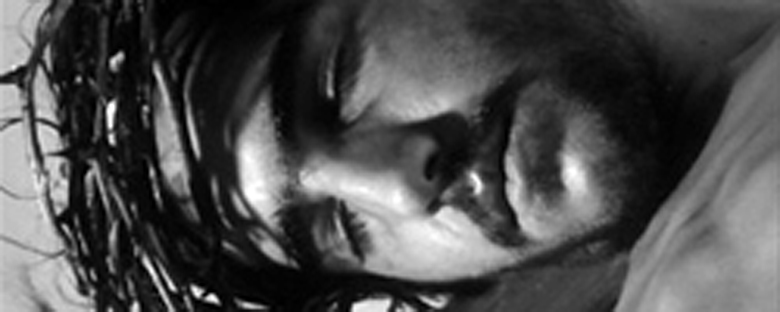Reviews
Il Vangelo secondo Matteo
Pier Paolo Pasolini
France / Italy, 1964
Credits
Review by Marlin Tyree
Posted on 01 May 2006
Source DVD
Related articles
Features: Pasolini’s Trilogy of Life
The Gospel According To Saint Matthew is Pier Paolo Pasolini’s poetic film transposition of the life of Jesus Christ from the ancient to the modern world; an attempt made, according to the late filmmaker, “without having to reconstruct it archaeologically or philologically.” Set in the rocky wasteland of the Southern Italian countryside, shot in black and white stock, and cast with the natives of the region, the film has an insularity that helps to give the two-thousand year-old story an authenticity missing from nearly every other major production of the life (or Passion) of Christ on film.
This insularity is re-enforced by Pasolini’s emphasis on the emotional and psychological states of the players within the drama. By zooming into and holding long shots of the faces of so many (even the bit players), Pasolini creates a fascinating psychological reality but often one that is static, failing to move the narrative forward. A good example is the long shots held of the various hired murderers just before the slaughter of the innocents. Do we really need to peer into the faces of every desperado before we comprehend Pasolini’s psychological portrait of cruelty? On the other hand, the opening shots of a distraught and pregnant Mary confronting a confused and torn Joseph are crafted with no dialogue and just enough psychological tension to start the narrative.
Despite the film’s “alternate trajectory” (as opposed to the traditional “harmonizing trajectories” of films like Cecil B. DeMille’s The King of Kings, George Stevens’ Greatest Story Ever Told or Franco Zeffirelli’s Jesus of Nazareth), its primary weakness lies in the failure to recreate the drama inherent in the power plays of the traditional Jesus story. Salome’s dance of the seven veils, for instance, seems to have little reason for being included—it’s almost a sideline. Though we know Salome performs it in exchange for the head of John The Baptist, the power-intrigue behind and the specific reasons for Salome’s performance (dull and perfunctory as it is) remain a mystery. In fact, the usual power-players in the Jesus story (Caiaphas, Pontus Pilate) have little or almost no role here. Mary Magdalene, one of the most controversial figures in all the films mentioned above and even central to Scorsese’s The Last Temptation of Christ (another “alternative trajectory” of the Jesus story), makes no appearance in Pasolini’s film. Christ’s strongest criticism and condemnation is directed primarily to the Pharisees (or church authorities). In Gospel, Jesus’ (and hence, Pasolini’s) argument and resultant persecution is primarily a religious one.
Enrique Irazoqui’s zealous performance as Jesus is the film’s real propeller. I realize, of course, that to call Christ a zealot (especially given that the term originates from the very Zealots who were a Jewish religious/political faction during this period in Palestine) may be perhaps misleading, but (save Lothaire Bluteau’s turn as Jesus in Jesus of Montreal) this Jesus is played with more zeal than probably any other cinematic Christ. He’s a firebrand and upstart, yet he plays it with such delicacy and restraint (some have even said “effeminacy”) that it stands well placed in Pasolini’s overall poetic vision.
Pasolini, himself Marxist, Catholic, atheist, homosexual and outspoken national critic, was apparently something of “a loose cannon” (according to one of his long-time collaborators/cinematographers, Tonino Delli Colli). None of these seeming contradictions affect the film’s narrative or content. The film induces a solemnity in the viewer similar to that of reading the actual text of the gospel. The dialogue, in fact, is taken strictly, though selectively, from Matthew. Pasolini’s gospel is a purposely contemporary and vehemently present testament. All of Christ’s eschatological sermons are absent. No talk about the future world in God’s Kingdom exists in the film. Pasolini is often frighteningly direct in his approach. At one point, the centerpiece, actually, Christ peers directly into the camera while delivering his oratory. The sequence is composed of an extended series of close shots in alternate lighting, supplemented with sounds of wind and thunder, with Christ in alternating headdress, moods and levels of intensity. It’s a masterstroke of filmmaking that combines the power of the gospel text and visual potency. The entire film proceeds along such lines to induce a kind of incantation. Admittedly made for Italian Christians (or anyone who can read English subtitles, at this point) who don’t ordinarily read the gospel, Pasolini’s film provides a powerful experience for those familiar with it as well.
We don’t do comments anymore, but you may contact us here or find us on Twitter or Facebook.



